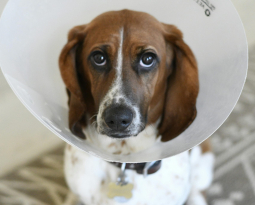As a pet parent, we always want to make sure our feline friends are happy and healthy. We have previously talked about general symptoms to look out for with your pet but what are the illnesses that cat’s face most often? Today we’re going to talk about cancer, one of the common cat illnesses, what causes it, what to look out for, and what you should do.
What is it and what causes it?
Cancer, put simply, is the uncontrolled growth of abnormal cells in the body. These cells often invade other tissues and spread throughout the body, as such, it is not one disease but a class of diseases that can affect several different parts of the body. In cats, the most common forms of cancer include; lymphoma (cancer that begins in infection-fighting cells of the immune system), specifically the gastrointestinal form, and oral squamous cell carcinoma (the formation of a malignant tumor anywhere in the oral cavity)
Cancer is known as a “multifactorial” disease, meaning there is no known single cause, although there are certain environmental or hereditary factors that can contribute to the disease. Age can also play a part in the likelihood of cancer development, although all cats can be diagnosed with the disease it is more common in seniors. Certain breeds can also be more prone to different types of cancer. For example, cats with white heads and ears tend to be more susceptible to skin cancer.
Signs and Symptoms
Often times, it is difficult to identify this cat illness as felines often try and hide their sickness, but there are several signs and symptoms that you can look for to try and identify this disease as early as possible. Externally, you’ll want to look for any lumps, scaly or red skin patches, swelling, or any kind of weight loss. Lumps can be benign or malignant but are worth having a veterinarian take a look at either way. Any change in behaviour is also cause for concern in your feline friend. Listlessness, lethargy, or decreased or loss of appetite for any period of time are all reasons to contact your vet for a consultation. Other signs and symptoms to keep an eye out for include difficulty breathing, urinating or defecating, vomiting, diarrhea, and the sudden inability to move body parts.
Prevention, Treatment, and What to Expect

If you have already noticed any of the signs and symptoms that were listed in the previous section, it is important to contact your veterinarian as soon as possible to get further consultation. For any lumps, your vet can run a biopsy to determine if it is benign or malignant. Other tests such as ultrasound, blood evaluation, and radiology can be helpful in diagnosing the cancer and determining if it has spread.
When it comes to treatment options will vary depending on the type and stage of the cancer. Common forms of treatment include surgery to remove any of the lumps or growths, chemotherapy, radiation, immunotherapy or any combination of therapies to treat as needed. If you choose to forego those treatment options, palliative care and pain relief should be considered. Any treatment results will vary based on the form and extent of the cancer as well as the aggressiveness of the treatment. In the event that your pet’s cancer is not curable there are still many things that you can do to still make them feel better. Good nutrition and loving care can tremendously affect your cat’s quality of life.
Whether you know your cat may be sick, want to get a lump looked at, or are just going in for a wellness visit, it is important to maintain open communication with your veterinarian to make sure your feline friend is getting the proper treatment. If your pet is experiencing any symptoms don’t hesitate to contact us, we’re happy to help!







